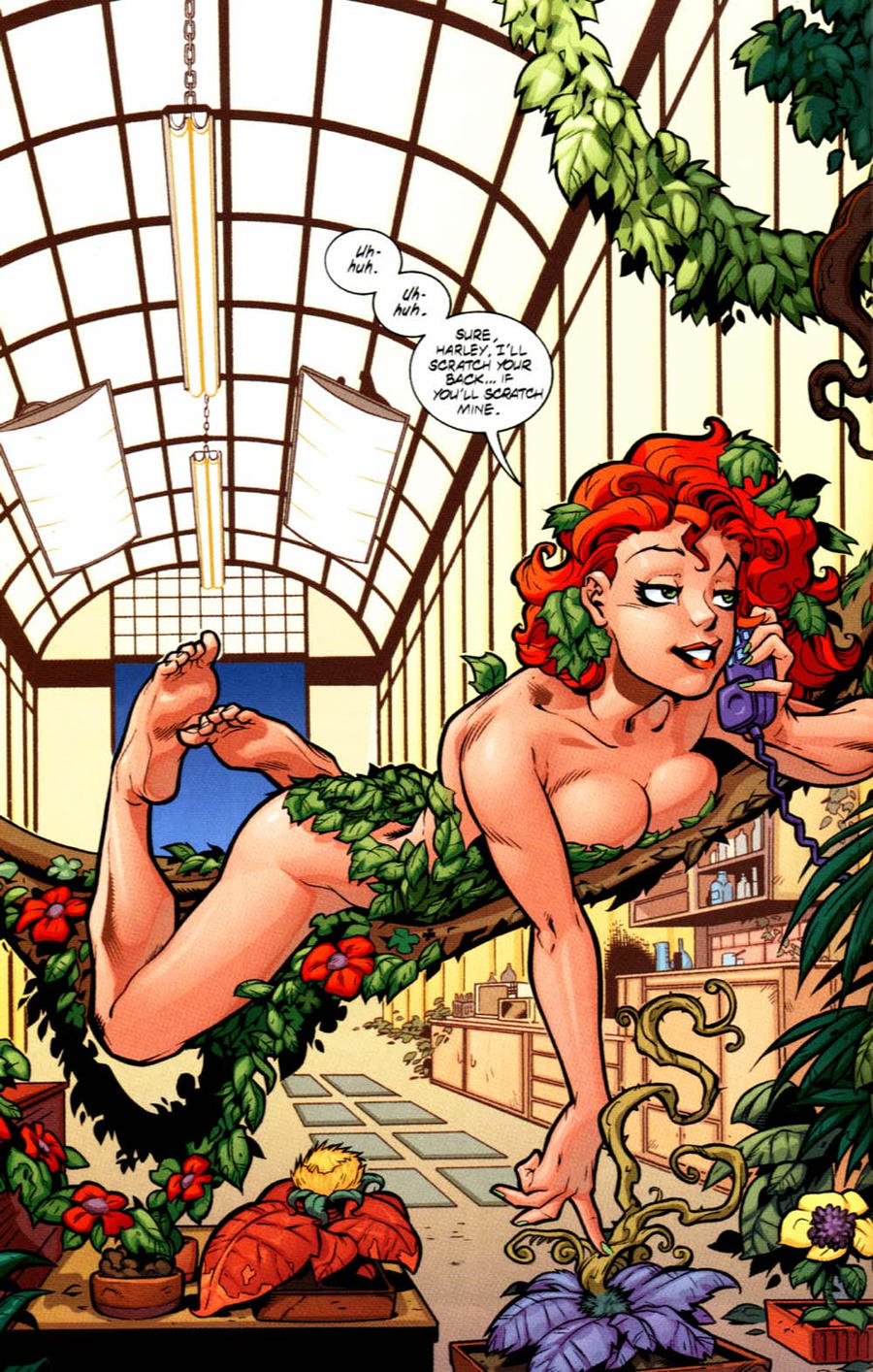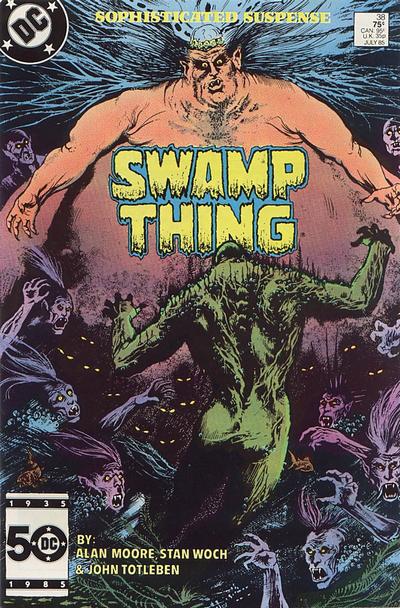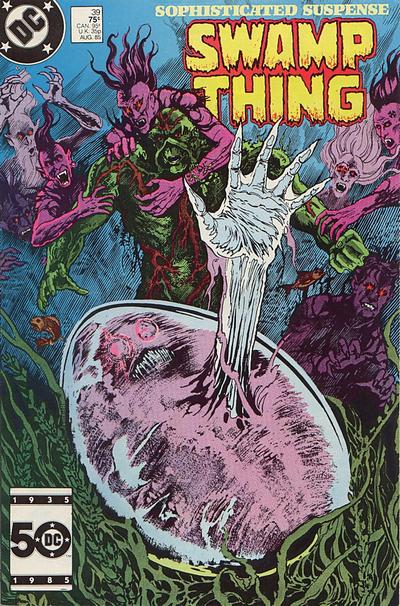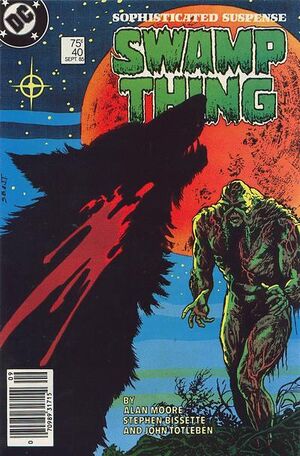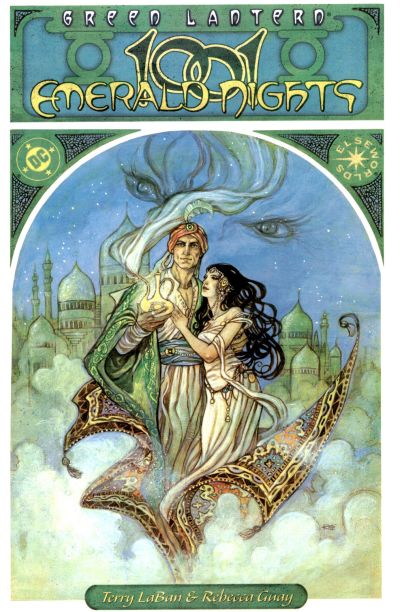“I said I’d tell the people your missus works for about her sleeping arrangement. I’m a nasty piece of work, chief. Ask anybody.”
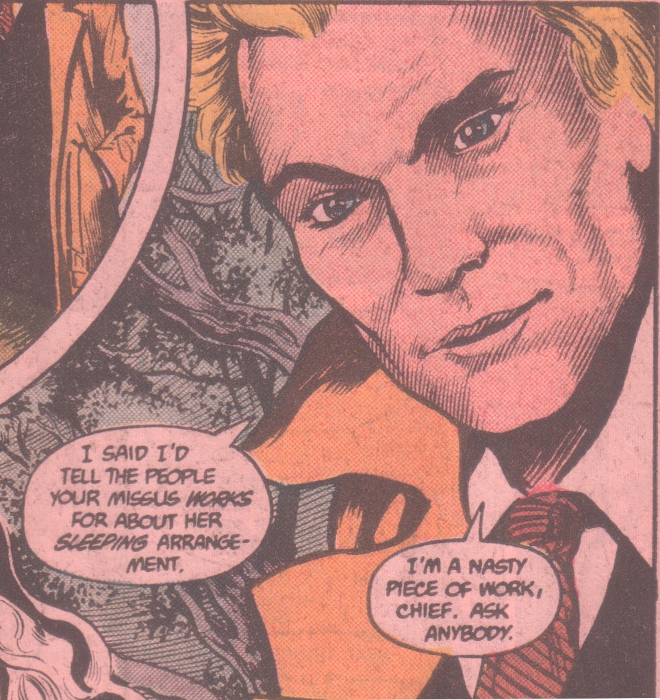
And with those words John Constantine introduces himself to Swamp Thing. While that was the introduction of Constantine to Swamp Thing, he had actually been introduced to readers 12 pages earlier in issue 37.
Our first sight of John paints him as a rather dapper figure with his familiar trench coat draped over his shoulders and wearing a pair of white gloves with the trademark cigarette in hand. A far cry from the rumpled mage of later years.
He is seen visiting various mystics and magic practitioners of his acquaintance trying to get to the bottom of rumours of a returning destructive force but each person he speaks to has a different vision of what that force might be.
In issue 37, Constantine enlists the help of Swamp Thing by promising to tell him more about his nature. Swamp Thing is undergoing his first painfully slow regeneration and it is John that tells him how his power is greater than he imagines and how he could abandon a body in one location and travel to another location and grow a new body there.
Abby is immediately skeptical of this new influence in the Swamp Thing’s life, probably due to still recovering from her first meeting with him when he appears in the back of her car, and sees to his heart saying, “Let him go, Alec. He’s trying to lead you on …” but John has him intrigued and by the end of the issue Swamp Thing is obviously planning to rendezvous with John in Chicago.
In this comic we have seen many of the defining characteristics of John Constantine that would be played on endlessly by writers – his air of mystery, moving in mysterious circles, his manipulative nature, his bravado. In a single issue, Alan Moore created an intriguing character whose appeal would continue for a further 28 years and counting.


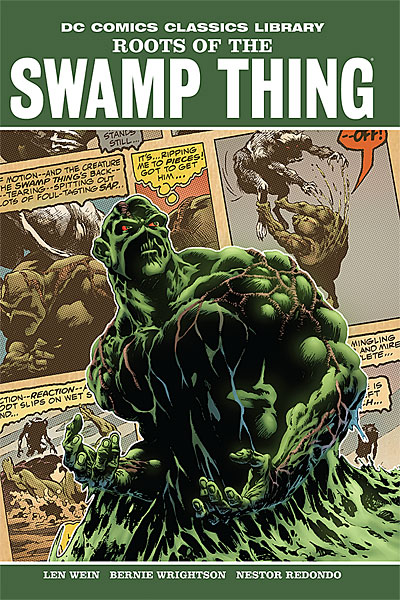
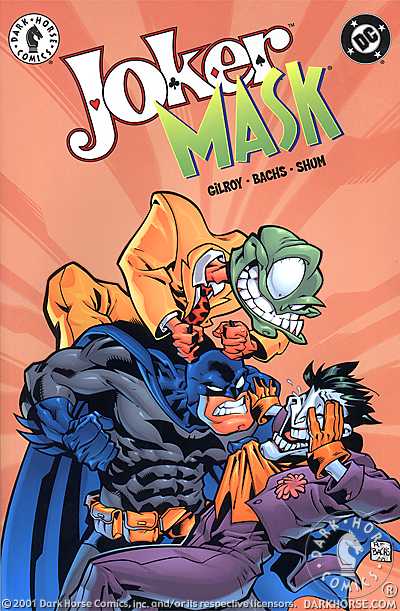 Joker/Mask is the collection of a four issue series from DC and Dark Horse. The story was written by Henry Gilroy with art from Ramon F. Bachs and Howard M. Shum. I have not seen the work of any of these creators before but Gilroy is a co-writer on the Star Wars: Clone Wars TV series among other animation series credits.
Joker/Mask is the collection of a four issue series from DC and Dark Horse. The story was written by Henry Gilroy with art from Ramon F. Bachs and Howard M. Shum. I have not seen the work of any of these creators before but Gilroy is a co-writer on the Star Wars: Clone Wars TV series among other animation series credits. 